
Picture the scene: Classrooms are buzzing with conversation, students debating ideas, explaining their reasoning, and building on each other’s contributions. But what’s the purpose of all this talk? Is it simply a by-product of learning, or could it be something much more? The answer lies in understanding two complementary approaches: learning through talk and learning to talk. These concepts, when combined, create a powerful framework that builds effective communication skills and deepens students' learning across the curriculum.
Learning Through Talk: Thinking Together
Learning through talk uses spoken communication as a learning tool. When students articulate their ideas, challenge each other constructively, and co-construct knowledge through dialogue, they deepen their understanding and develop critical thinking skills.
For example, exploratory talk encourages students to share their thoughts openly, leading to collaborative problem-solving. Research by Mercer and Dawes (2014) highlights how structured discussions can significantly enhance reasoning and academic performance, particularly in subjects like science and mathematics. Similarly, Alexander (2008) found that purposeful, dialogic teaching improves engagement and promotes a deeper understanding of complex ideas.
The benefits are clear:
- Enhanced comprehension: Speaking aloud helps students organise and test their understanding.
- Critical thinking: Articulating and defending ideas sharpens reasoning.
- Collaboration: Group discussions foster teamwork and interpersonal skills.
Learning to Talk: The Foundation of Communication
While talk can be a tool for learning, students must first be taught how to use it effectively. Learning to talk focuses on developing the skills needed for clear, confident communication. This includes expanding vocabulary, constructing sentences, listening actively, and understanding non-verbal cues like tone and body language.
For younger children, early language development is particularly important. Hart and Risley’s (1995) landmark study demonstrated that a rich language environment predicts vocabulary growth and later academic success. As students grow, explicit teaching of oracy skills becomes vital. The Voice 21 report (2021) highlights how deliberate practice in speaking and listening boosts confidence, social skills, and academic outcomes.
The benefits of learning to talk include:
- Improved expression: Students articulate their ideas more clearly.
- Active listening: Developing receptive skills helps students engage with others’ ideas.
- Confidence: Structured speaking opportunities build self-esteem and prepare students for the future.
Combining the Two: A Holistic Approach to Oracy
To unlock the full potential of oracy, we must combine learning through talk and learning to talk. This means explicitly teaching communication skills while embedding opportunities to use talk as a tool for learning across the curriculum. When students are taught how to communicate effectively and given meaningful contexts in which to do so, the synergy is transformative.
Practical Strategies for Combining the Two
1. Scaffolded Discussions
Teach sentence stems and discussion protocols (learning to talk) to guide rich classroom discussions (learning through talk). For example, phrases like “I agree because…” or “Can you clarify…” help students engage in exploratory dialogue.
Evidence: Alexander (2008) emphasised the role of scaffolds in improving both communication and learning outcomes.
2. Practice in Authentic Contexts
Provide opportunities for students to practise speaking skills while exploring subject-specific content. For instance, a debate on climate change requires students to articulate their arguments (learning to talk) while deepening their understanding of geography (learning through talk). In doing so, oracy is not seen as a stand-alone lesson but as a pedagogical approach.
Evidence: Mercer and Dawes (2014) found that practising disciplinary language supports both learning and communication.
3. Reflective Talk
Encourage students to reflect on their contributions to discussions. This connects their ability to express ideas (learning to talk) with the insights they gain (learning through talk).
Evidence: The EEF Toolkit links reflection on talk to improved metacognition and communication.
4. Embed Oracy Across the Curriculum
Oracy isn’t just for English lessons. Whether explaining a scientific process, analysing a historical event, or solving a maths problem, students need both the ability to communicate effectively and the opportunity to use talk as a learning tool.
Evidence: The Sutton Trust (2017) found that embedding communication skills across subjects leads to higher attainment.
Why It Matters
Incorporating both learning through and learning to talk equips students with lifelong skills. They not only master effective communication but also harness the power of dialogue to explore ideas, build understanding, and solve problems. Research consistently shows that these approaches enhance academic achievement, boost confidence, and prepare students for future success.
By combining these strategies, schools can create vibrant classrooms where every voice matters and every conversation is a step towards deeper learning and stronger communication skills. Oracy is not just about talking; it’s about thinking, learning, and growing together.
Find Out More
Join us for our live webinar, OracyUnlocked: A Practical Guide to Teaching and Learning Through Speaking and Listening, to explore practical strategies for combining learning through talk and learning to talk. This session offers hands-on techniques and evidence-based insights to help you unlock the power of oracy in your classroom. Don't miss this opportunity to transform how your students communicate and learn!
References
Alexander, R. (2008). *Essays on Pedagogy.* Routledge.
Hart, B., & Risley, T. R. (1995). *Meaningful Differences in the Everyday Experience of Young American Children.* Paul H. Brookes.
Mercer, N., & Dawes, L. (2014). The study of exploratory talk in school settings: Empirical evidence and research challenges. *International Journal of Educational Research,* 63, 47-58.
Sutton Trust. (2017). *Life Lessons: Improving Essential Life Skills for Young People.* Available at: https://www.suttontrust.com
Voice 21 & Oracy APPG. (2021). *Speak for Change: The Importance of Oracy in Schools.* Available at: https://voice21.org
Vygotsky, L. S. (1978). *Mind in Society: The Development of Higher Psychological Processes.* Harvard University Press.
Education Endowment Foundation (EEF). (2021). *Teaching and Learning Toolkit: Oral Language Interventions.* Available at: https://educationendowmentfoundation.org.uk
Related articles



.png)


